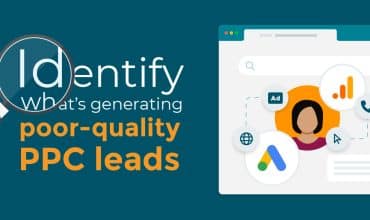Put the spotlight on your offline ROI
I’ve worked with hundreds of agencies, and have found that offline ROI is often unnecessarily treated like the ugly duckling of the marketing mix. It looks hard to measure and sometimes it doesn’t really fit in. As a result, it’s often looked at as a less reliable aspect of a brand’s marketing activity, or – even worse – left completely alone.
Offline marketing is usually hard to measure because of a lack of planning. Here, I’m going to take a look at what offline ROI you can look at, and offer 7 ideas on how to generate more offline data and ROI.
Opportunities for data
So, without further ado, here are 7 ideas that should help you bring online measurement metrics to your offline activity to increase your campaign ROI:
- Use individual call tracking numbers for each media: this is, hands down, the simplest way to measure direct offline response to an activity.
- Use promotion codes: I’m probably not saying anything new here, however it’s all in the execution. It’s less relevant to your audience if the code simply gives you X% off your purchase. Think of a true benefit to the user. For example, free shipping is basic but still works well, or offering extras and exclusive content or goods may have wider appeal.
- Track mentions on social media: Tools exist to give you insight into how your audience and customers are talking about your brand. Learn more here from the experts.
- Use Google Analytics Annotations: In GA, if you go to Traffic Sources > Sources > Direct you will see your direct traffic and are able to add notes to mark the dates on which you launched a specific offline campaign, or at which an activity happened.
- Target location specific activity: this is particularly relevant for events and stores. You can localise a portion of your response: e.g.: if you run a Facebook campaign targeting only customers within a specific location, you can filter your reports by date and location on GA and on Mediahawk.
- Vanity URLs, Custom Domains and Coded URLs with custom landing pages and generate better campaign urls with Google’s URL builder: There are so many ways to promote short and effective URLs offline that point to an online landing page. Remember to use URL tags generously. Learn more about boosting your landing page conversions.
- Capitalise on brand specific search terms: When speaking at an event, or promoting your business, actively tell your audience to search for a specific term. Leave them with a term in mind. Creating website content that’s optimised for specific phrases enables you to monitor the effectiveness of these. Content that answers a how or why, for example, tends do to well because that is how we search. I’d suggest using a tool like Answerthepublic.com to brainstorm effective questions. And if your content shows as a featured snippet on Google once they do make a search, you’re on to a winner.
Additionally, bid on the search terms in AdWords. It’s much easier to capture genuine and targeted interest offline this way than it is to hammer your unknown brand name out and hope that your audience will remember it. Most of the time they will search asking a question rather than searching for you specifically.
The reigning theory
The most important aspect in measuring any offline data has to be around controlling the scope of measurement. Analyse trends and think about how long after an activity you are likely to get web traffic and calls.
For example with TV spots it’s easy: your spot went out at 10pm: in the following hour, did you see an increase in traffic / web searches / social media activity, etc…? If the ad is replayed on a timeline, can you then measure waves of traffic?
All these methods require forward thinking and planning as well as a healthy dose of personalisation. And until we reach the holy grail of 100% marketing attribution, this sort of creative thinking is exactly what is required to capture more data offline as well an online.

Discover the benefits of our marketing agency partner programme




